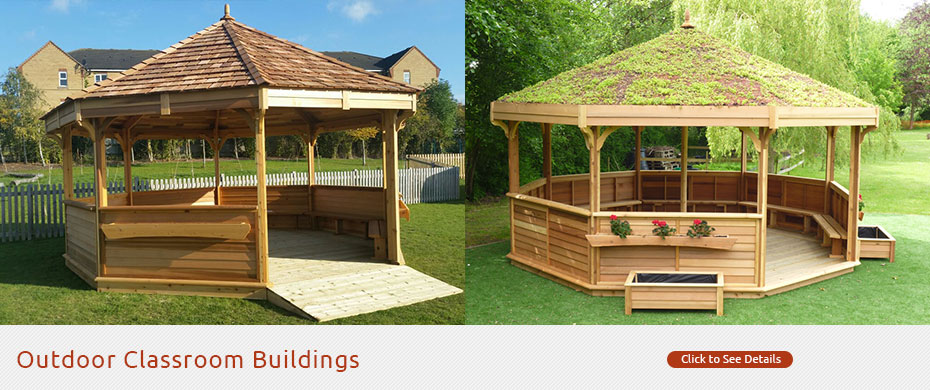Why Eco Outdoor Classrooms Are Becoming So Popular with Schools
I am noticing more and more that when we get enquiries from schools, they are referring to an eco outdoor classroom or eco classroom rather than just outdoor classroom. And I believe that there are good reasons for this – the main one being is that quite rightly we should all be concerned about the environment and climate change which involves undertaking due diligence as to how a school can purchase a building with a small carbon footprint. But I think it goes deeper than this in that an outdoor classroom itself should be used as a learning tool as well obviously providing a safe and comfortable space for outdoor learning and shelter from the elements.
So what makes an outdoor classroom an eco outdoor classroom? Good question. The easy one is to say you are using FSC accredited timbers from sustainable sources and that any offcuts are recycled for further use. But here at the Hideout House company we take this all one step further and here are the options we can offer:
- Living sedum roof. We have supplied a couple of outdoor classrooms in the past which have used a living sedum roof. They benefit the environment in that the children can see how the roof changes colour and texture with the passing of the seasons and how it attract wildlife and bio-diversity. The sedum also absorbs CO2 from the atmosphere like trees. But I think it is fair to point out that these type of roofs tend to be quite expensive because you have to significantly beef up the roof structurally to take the extra weight of the sedum and its sub-strata and they are very high maintenance.
- Educational renewable energy equipment. This comprises a roof mounted solar panel and wind turbine which feeds down onto a control and monitoring board so that the children can learn about and experience real green power from the wind and sun. Also comes with two low voltage sockets and bulk head light with datameter.
- Built in planters which can be fed from a solar powered watering and irrigation system
- Water butt, roof guttering and downpipe for rainwater harvesting
- Special dynamo bikes or hand cranks the children have to pedal or turn to create power and electricity which in turn power up systems such as music consoles and drum and sound pads, wifi, bright lights, bubble making machines etc
- Insulation for our enclosed outdoor classroom range which gives the building enhanced thermal efficiencies for heating
- Off grid power packages including solar panels, batteries and a bio-diesel generator
I think it was Tony Blair who said a few years ago now that sustainable development will not just be a subject in the classroom but will be in the buildings and the way a school will generate its own power. They will not only study all about sustainable development, they will study inside it and be an active part of it. Never before has this been so true of today.
For information on our eco outdoor classrooms and eco classrooms, please give us a call on 01832 275902 or email: info@hideouthouse.com












